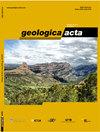New evidence for late Eocene-early Oligocene uplift of Aves Ridge and paleogeography of GAARlandia
IF 2
4区 地球科学
Q2 GEOLOGY
引用次数: 0
Abstract
The GAARlandia hypothesis has produced vigorous debate among biologists regarding whether now-submerged landforms that existed in the Caribbean region during the late Paleogene might have acted as a barrier for marine organisms and as a bridge for terrestrial biotas migrating from South America into the Greater Antilles. This concept derived from the hypothesized emergence history of the Aves Ridge. In the quarter century since GAARlandia was first proposed, new paleontological, geological and geophysical information has greatly extended the database available. Here we reaffirm that GAARlandia was a positive topographic feature from middle Eocene, and was exposed above sea level between late Eocene and early Oligocene when it facilitated biotic colonization of the northern Greater Antilles and their satellite islands, whether as a series of closely spaced islands or as a continuous peninsula projecting from northeastern South America along the crown of the rise.埃夫斯岭晚始新世-早渐新世隆升与GAARlandia古地理的新证据
GAARlandia假说在生物学家中引发了激烈的争论,争论的焦点是古近纪晚期存在于加勒比海地区的淹没地貌是否可能成为海洋生物的屏障,以及陆地生物从南美洲迁移到大安的列斯群岛的桥梁。这个概念来源于假设的Aves山脊的出现历史。自从GAARlandia首次被提出以来的四分之一个世纪里,新的古生物学、地质和地球物理信息极大地扩展了可用的数据库。在这里,我们重申,GAARlandia是始新世中期的一个积极地形特征,在始新世晚期和渐新世早期暴露在海平面以上,当时它促进了大安的列斯群岛北部及其卫星岛的生物殖民化,无论是作为一系列间隔紧密的岛屿,还是作为一个从南美洲东北部沿着山脊突出的连续半岛。
本文章由计算机程序翻译,如有差异,请以英文原文为准。
求助全文
约1分钟内获得全文
求助全文
来源期刊

Geologica Acta
地学-地质学
CiteScore
2.50
自引率
6.70%
发文量
13
审稿时长
>12 weeks
期刊介绍:
- Relevant conceptual developments in any area of the Earth Sciences.
- Studies presenting regional synthesis.
- Thematic issues or monographic volumes presenting the results from one or more research groups.
- Short papers reflecting interesting results or works in progress.
- Contributions and results from Research Projects, Workshops, Symposiums, Congresses and any relevant scientific activity related to Earth Sciences.
- Geologica Acta aims to stimulate rapid diffusion of results and efficient exchange of ideas between the widespread communities of Earth Science researchers (with special emphasis on Latinamerica, the Caribbean, Europe, the Mediterranean
 求助内容:
求助内容: 应助结果提醒方式:
应助结果提醒方式:


